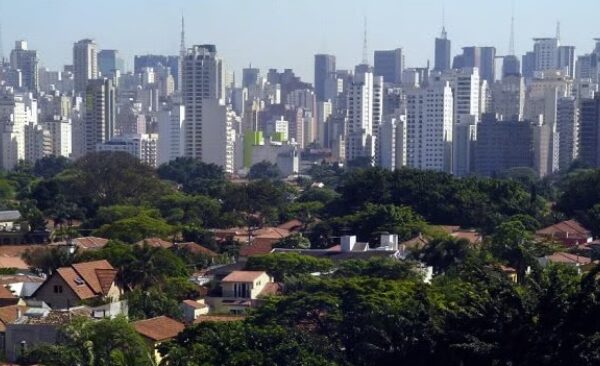The conflict between residents and businesses in the Jardins neighborhood of São Paulo is a classic example of a dispute where, given the parties involved, it might be best to simply root for the fight itself.
We’re talking about one of the most expensive square meters in Latin America, near Ibirapuera Park, specifically between Paulista Avenue and Faria Lima Avenue, with the feel of first-world privileges. Despite being in the heart of the largest metropolis in South America, the expectation is to maintain it as an American suburb.
The context is as follows: Jardins, a neighborhood located in the west zone of São Paulo, is at the center of changes to the city’s Zoning Law. Currently, the area has restrictions on the capacity of establishments and the type of entertainment businesses can offer.
As a result, we see residents on one side—who want to ensure their restricted access to this part of the city, as well as their tranquility—and business owners who want to expand their activities to cater to one of the highest purchasing power audiences in Brazil.
The clash between residents and developers—along with the businesses operating in the region—offers a vivid representation of Public Choice Theory. This conflict reveals the intense competition between interest groups in influencing public policy formulation, particularly in urban zoning.
While entrepreneurs aim to inject dynamism into commerce by promoting urban densification, residents fight to preserve a central area of São Paulo, excluding it from the impacts of this population increase.
The noise of the dispute lies in both sides’ ability to conduct effective lobbying to shape zoning policies according to their interests. In this context, the environment emerges as a crucial point, standing out as one of the most sensitive elements in the current urban scenario.
The residents, supposedly grounded in an agenda of environmental preservation and quality of life, seek zoning policies that ensure the protection of green spaces, limit uncontrolled real estate growth, and maintain the local identity.
On the other hand, developers and business owners, driven by legitimate economic interests, push for more flexible policies that allow for urban expansions and larger developments.
It’s important to understand that low density in these areas limits access to jobs and mobility and intensifies urban sprawl in São Paulo. Additionally, the increase in commerce in the area benefits not only new employees directly but also the entire tourism industry in such a beautiful part of the city. The result of stricter regulations is to keep a reduced number of residents with access to Ibirapuera Park and the vibrancy of city life.
Public Choice Theory argues that in this conflict, the involved parties seek to maximize their gains, whether through economic advantages, property protection, or ensuring an urban environment more suited to their preferences. Intense lobbying around zoning policy thus becomes a crucial tool for influencing the final decision.
A fundamental point emphasized by this theory is that, ultimately, the decision should rest with the property owners, represented by the neighborhood’s residents. This underlines the importance of considering the preferences of the local community and ensuring that zoning policies reflect their values and needs.
In this way, the conflict in Jardins not only illustrates the dynamics of Public Choice Theory but also highlights the need for a decision-making process that considers the diverse interests at play, balancing urban development with environmental preservation and residents’ quality of life. This conflict is not just local but a broader reflection of the complex choices urban communities face on their path toward sustainable progress.


